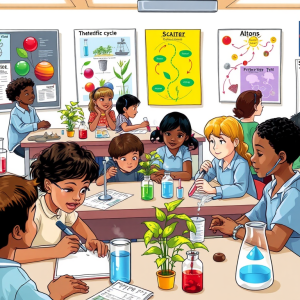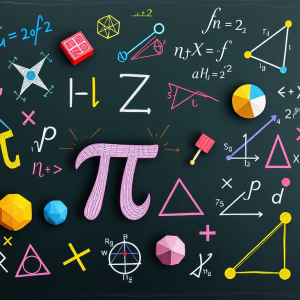Mathematics Paper 2: Form 4 QA Model – Document ID 20250302001
KSh 75.00 Original price was: KSh 75.00.KSh 50.00Current price is: KSh 50.00.
Featured questions from the “KCSE MOCK-MATHEMATICS PAPER 2 QA MODEL”:
Section I (50 Marks)
- Use logarithm tables to solve:
639445.23=0.1122(4 marks)\frac{6394}{45.23} = 0.1122 \quad (4 \text{ marks})45.236394=0.1122(4 marks)
- Solve for xxx in the equation:
sin(4x+10∘)−cos(x+70∘)=0(3 marks)\sin(4x + 10^\circ) – \cos(x + 70^\circ) = 0 \quad (3 \text{ marks})sin(4x+10∘)−cos(x+70∘)=0(3 marks)
- A quantity KKK is partly constant and partly varies as MMM. When K=45K = 45K=45, M=20M = 20M=20, and when K=87K = 87K=87, M=48M = 48M=48:
a) Find the formulae connecting KKK and MMM (1 mark)(1 \text{ mark})(1 mark)
b) Find KKK when M=36M = 36M=36 (2 marks)(2 \text{ marks})(2 marks)
- (i) Expand (2x+1)5(2x + 1)^5(2x+1)5 in ascending powers of xxx (1 mark)(1 \text{ mark})(1 mark)
(ii) Hence use your expansion up to the third term to evaluate (2x+1)5(2x + 1)^5(2x+1)5 at x=0.98x = 0.98x=0.98 (2 marks)(2 \text{ marks})(2 marks)
- Find the equation of the normal to the curve y=x2+4x−3y = x^2 + 4x – 3y=x2+4x−3 at point (1,2)(1, 2)(1,2) (3 marks)(3 \text{ marks})(3 marks)
- Using a ruler and a pair of compass only, construct triangle ABCABCABC in which BC=6.6 cmBC = 6.6 \text{ cm}BC=6.6 cm, AC=3.8 cmAC = 3.8 \text{ cm}AC=3.8 cm, and AB=5.6 cmAB = 5.6 \text{ cm}AB=5.6 cm. Locate point EEE inside triangle ABCABCABC which is equidistant from points AAA and CCC such that angle AEC=90∘AEC = 90^\circAEC=90∘ (3 marks)(3 \text{ marks})(3 marks)
- Solve the following trigonometric equation:
2cos2(x+30∘)=1for 0∘≤x≤360∘(3 marks)2\cos^2(x + 30^\circ) = 1 \quad \text{for } 0^\circ \leq x \leq 360^\circ \quad (3 \text{ marks})2cos2(x+30∘)=1for 0∘≤x≤360∘(3 marks)
- The position vectors of AAA and BBB are given as a=2i−3j+4ka = 2i – 3j + 4ka=2i−3j+4k and b=−2i−j+2kb = -2i – j + 2kb=−2i−j+2k respectively. Find to 2 decimal places, the length of the vector ABABAB (3 marks)(3 \text{ marks})(3 marks)
- A T.V. set was bought on hire purchase. A down payment (deposit) of Ksh 5000 was paid and a 15 monthly installment of Ksh 1500 was required.
a) Calculate the total amount paid on hire purchase (1 mark)(1 \text{ mark})(1 mark)
b) If the hire purchase payment is 20% more than the cash payment, find the cash price (2 marks)(2 \text{ marks})(2 marks)
- The figure below shows a triangle ABCABCABC inscribed in a circle. AC=10 cmAC = 10 \text{ cm}AC=10 cm, BC=7 cmBC = 7 \text{ cm}BC=7 cm and AB=10 cmAB = 10 \text{ cm}AB=10 cm. Find the radius of the circle (Leave your answer to the nearest 1 decimal place) (3 marks)(3 \text{ marks})(3 marks)
- The floor of a rectangular room measures 4.8 m×3.2 m4.8 \text{ m} \times 3.2 \text{ m}4.8 m×3.2 m. Estimate the percentage error in the area (3 marks)(3 \text{ marks})(3 marks)
- Simplify without using mathematical tables or a calculator:
log16+log81log8+log27(3 marks)\frac{\log 16 + \log 81}{\log 8 + \log 27} \quad (3 \text{ marks})log8+log27log16+log81(3 marks)
- Rationalize the denominator fully and simplify, leaving your answer in surd (3 marks)(3 \text{ marks})(3 marks)
- The figure below shows the graph of logy\log ylogy against logx\log xlogx. If the law connecting xxx and yyy is of the form y=axby = ax^by=axb, where aaa and bbb are constants, find the values of aaa and bbb (3 marks)(3 \text{ marks})(3 marks)
- Solve the equation by completing the square method:
2×2+3x−5=0(3 marks)2x^2 + 3x – 5 = 0 \quad (3 \text{ marks})2x2+3x−5=0(3 marks)
- Find the area bounded by the curve y=x(x−1)(x+2)y = x(x-1)(x+2)y=x(x−1)(x+2) and the x-axis (4 marks)(4 \text{ marks})(4 marks)
Section II (50 Marks)
- Mr. Ouma is a civil servant with a basic salary of Ksh 18,000. Using the tax table below, calculate his PAYE:
- Taxable income and rates provided.
a) Calculate his total monthly deductions in Ksh (7 marks)(7 \text{ marks})(7 marks)
b) Calculate his net monthly pay in Ksh (3 marks)(3 \text{ marks})(3 marks)
- The points A1,B1,C1A_1, B_1, C_1A1,B1,C1 are images of A,B,CA, B, CA,B,C under a transformation matrix NNN.
a) Write down the coordinates of A1,B1,C1A_1, B_1, C_1A1,B1,C1 (3 marks)(3 \text{ marks})(3 marks)
b) Write down the coordinates of A11,B11,C11A_{11}, B_{11}, C_{11}A11,B11,C11 under a different transformation (3 marks)(3 \text{ marks})(3 marks)
c) Determine the transformation matrix KKK (4 marks)(4 \text{ marks})(4 marks)
- The figure shows a solid frustum of a pyramid with a rectangular top and base.
a) Calculate the height of the frustum (3 marks)(3 \text{ marks})(3 marks)
b) Calculate the volume of the solid frustum (3 marks)(3 \text{ marks})(3 marks)
c) Calculate the angle between specified lines and planes (4 marks)(4 \text{ marks})(4 marks)
- The 2nd and 5th terms of an arithmetic progression (A.P.) are 8 and 17 respectively.
a) Find the 1st term and the common difference (3 marks)(3 \text{ marks})(3 marks)
b) Find the first three terms of the G.P. and the 10th term (4 marks)(4 \text{ marks})(4 marks)
c) Calculate the sum of the first 10 terms of the G.P. (3 marks)(3 \text{ marks})(3 marks)
- Hospital records for maternity patients are given.
a) Find the probability that a patient stayed exactly 5 days (2 marks)(2 \text{ marks})(2 marks)
b) Find the probability that a patient stayed less than 6 days (2 marks)(2 \text{ marks})(2 marks)
c) Find the probability that a patient stayed at most 4 days (2 marks)(2 \text{ marks})(2 marks)
d) Find the probability that a patient stayed at least 5 days (2 marks)(2 \text{ marks})(2 marks)
e) Find the probability that a patient stayed less than 7 days but more than 4 days (2 marks)(2 \text{ marks})(2 marks)
- The positions of two towns X and Y are given.
a) Find the distance between the two towns along the parallel of latitude in km (3 marks)(3 \text{ marks})(3 marks)
b) Find the distance in nautical miles (3 marks)(3 \text{ marks})(3 marks)
c) Calculate the speed of a plane traveling from X to Y (4 marks)(4 \text{ marks})(4 marks)
- A transporter has a van and a pick-up available for trips.
a) Write down four inequalities that must be satisfied by the trips (4 marks)(4 \text{ marks})(4 marks)
b) Represent the inequalities graphically and determine the maximum profit (6 marks)(6 \text{ marks})(6 marks)
- A stone is thrown straight up from the edge of a roof.
a) How far is the stone 3 seconds later? (5 marks)(5 \text{ marks})(5 marks)
b) What time does it hit the ground? (3 marks)(3 \text{ marks})(3 marks)
c) What is the velocity of the stone when it hits the ground? (2 marks)(2 \text{ marks})(2 marks)
These questions cover a wide range of mathematical concepts, including algebra, geometry, trigonometry, statistics, and applications of mathematics in real-world scenarios.



Reviews
There are no reviews yet.